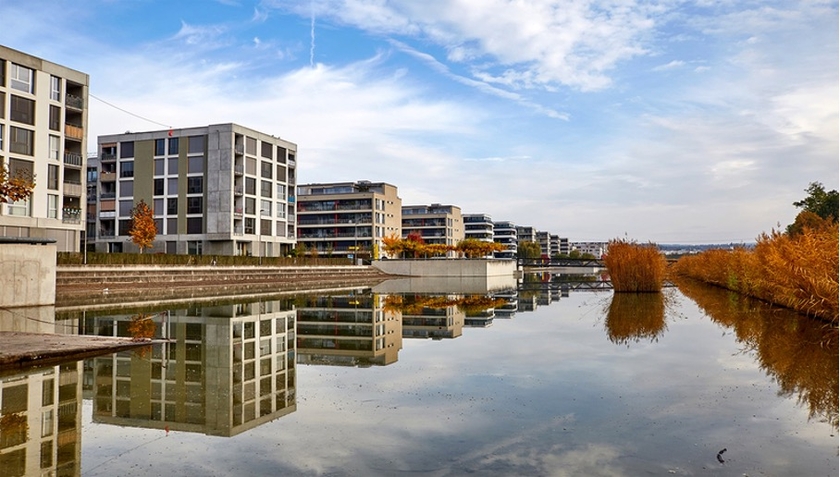Department Environmental Social Sciences
Decision analysis for the evaluation of blue-green infrastructure under future climate conditions

Blue-green infrastructure (BGI) is a key element in promoting climate adaptation in urban areas. BGI includes natural and semi-natural elements such as infiltration basins, pervious pavements, green roofs and detention ponds. Compared to ‘gray’ infrastructure solutions, such as stormwater storage tanks, BGI offers multifunctional advantages. On the one hand, sewer systems are relieved during rain events and fewer micropollutants are discharged into surface waters because BGI temporarily stores rainwater and prevents rainwater runoff from mixing with wastewater. On the other hand, BGI can reduce heat in urban areas, promote biodiversity and provide recreational spaces. However, there are several challenges in selecting specific elements of BGI. Each element has its own strengths in terms of multifunctional benefits and is associated with different costs. This can lead to conflicts of interest between different stakeholders, such as the public sector, residents, or nature conservation organizations. In addition, the combination of certain elements offers synergy potential. Selected blue elements can provide additional water to green elements, increasing the effectiveness of the entire system in times of extreme heat and drought. Finally, the selection of BGIs and their effects also depend on climatic developments. This must be considered in the assessment. The selection of BGI therefore represents a complex planning problem - different elements can be combined in different ways and have different effects.
In this research, we evaluate different BGI options at the neighborhood level under future climate conditions, taking into account the goals and preferences of stakeholders. Each option combines different BGI elements. We identify options that are as advantageous as possible for the stakeholders involved, both now and in the future. Besides stakeholder preferences, our evaluation considers information from hydrological simulations and climate models as well as scientific evidence and expert opinions on the options impacts.
For this purpose, we apply the methods of Multiple Criteria Decision Analysis (MCDA). We employ Problem Structuring Methods (PSM) to deal with the complexity of the decision problem. We elicit stakeholders’ objectives and preferences in surveys and workshops according to the Multi-Attribute Value / Utility Theory (MAVT / MAUT). As the predicted consequences of the BGI options are often subject to substantial uncertainty, they are modeled using statistical distributions and Monte Carlo simulation. Uncertainties related to the preferences are addressed by means of sensitivity analyses. This allows us to investigate the robustness of the results. With this research, we aim to inform engineers, urban planners, and stakeholders about the multifaceted potentials and impacts of different BGI options, and to investigate which aspects are most important when evaluating BGI options. This research is part of the BETTER project.
Project information
Project duration: Oktober 2024 – June 2026



